21 Feb James K. Gimzewski, nanotechnology pioneer
James Kazimierz Gimzewski , Professor of Chemistry at the University of California, Los Angeles and Member of the Executive Board of the California Nanosystems Institute (CNSI-UCLA).
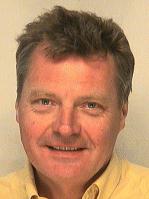
Prior to joining the UCLA faculty, he was a group leader at IBM Zurich Research Laboratory , where he was involved in nanoscale science and technology issues for more than 18 years. Dr. Gimzewski pioneered research on mechanical and electrical contacts with single atoms and molecules using scanning tunneling microscopy (STM)and was one of the first persons to image molecules with STM.
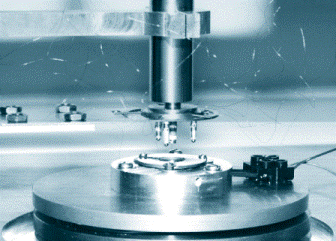
The invention of the scanning tunneling microscope (STM) in 1981 allowed scientists to view the world from an atomic perspective for the first time. The revolutionary microscope, for which two researchers at Zurich Labs, Gerd Binnig and Heinrich Rohrer received the 1986 Nobel Prize in physics, revealed the topography of surfaces, atom by atom.
Professor Gimzewski is a co-director of Nano an interactive exhibit comprised of nine installations that present Nanotechnology using a hybrid of art and science.
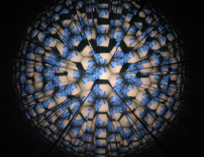
More in the pico lab site .
I had the opportunity to listen to Professor Gimzewski in La Pedrera (The Quarry). Sponsored by KRTU and conducted by professors José Ignacio Latorre and Josep Perelló, the international gathering Física de l’Estètica (Aesthetic Physics) was held in Gaudi’s symbolic masterpiece a few month ago,
Later We could share some of his insights on science as well on education.
Machines do rule the world, small machines do rule the world.
If we look at our body we have inside machines which are functioning from proteins which operate in a very different way, but they are machines and so more or less I can say that machines will continue to rule the world and small machines will be part of that future, but not perhaps the type of machines that have been perhaps proposed in modern science fiction.

1966 science fiction movie in which a surgical team –among them
Raquel Welch– is miniaturized and inserted into a dying man
What are machines? It depends how you define machines, but nanoparticles at the moment are very simple.
They are maybe just an organic core, with some functional part, let?s say some biochemical part, used to image cells, some are nano-shells that target tumours, particles that target Alzheimer?s that are used in MRI (Magnetic Resonance Imaging). These exist.
These particles, for instance in MRI,have to be less than 4 nanometers to pass the blood-brain barrier. The extension of that is to increase their functionality and increasing the functionality will inevitably involve some mechanical changes to their structure. In that sense they will be nanomachines.
Nanoarchitectonics,- Part of my work involves thinking about how one can design a system on a very small scale, trying not to take too much from the way machines operate on the scale of this world, but perhaps borrowing from, or being inspired by how a biological system machine is functioning. And that is certainly a part of my long-term thought processes, and the whole concept of nanoarchitectonics is an essential part of the design of nanotechnology systems.
I think we will develop organic systems but it will take longer. We can probably gain more in the area of biological systems, also because I believe that for medical applications they are essential and that is a very important area that has more closer to market applications.
Sonocitology,- The vibration of cells is something that is more recent. The cell vibrates in a different way, and we?ve done work on new cells and we continue to work on new cells.
Now that?s based on the principle that we know inside the cell are things called molecular motors. These are protein structures powered by ATP and there is constantly mechanical motion inside the cell just to maintain the metabolism of the cell. So protein motors are a kind of signature of metabolism. I believe if we can develop more and more and better techniques to follow this cell vibration, we can learn a lot of its state: if it?s healthy, if it?s metastatic, whatever state it could be in.
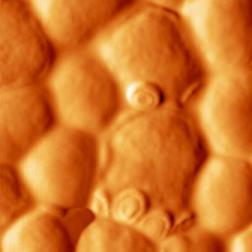
Freight-carrying proteins vibrate walls of cells
Morphing,- Nanotechnology will be important in the future in its role to change the shape of things from one form to another form.
Now when we think about this issue of changing the shape, an aircraft is a very good example. When it goes supersonic is has to become more pointed, a swing wing aircraft. When an aircraft lands, the flaps have to go out. But the question is can we design structures that morph, that are not so classically mechanical, with no seams or no hinges?
We know that cells and bacteria are changing shape all the time and mechanically. It is very hard to understand them in terms of normal mechanical properties. So what I have got some ideas about how to make structures change shape, which is loosely inspired by biological systems, and that is what I am working on.
Today’s Education systems are entrenched in the past,- They propagate from one generation to another generation. Books are still a big part of the thing. Now We live in an information technology age, you wanted to get information on me so you looked up this Wikipedia, you didn?t go to the library and you didn?t need to memorise this, you brought it along with you.
Learning through exploration,- Children have Internet and they can do a lot of exploration. The skill set they need is the ability to search for information, to be able to understand it and to be creative and do something new.
The education system of the past is that they would have to learn in a very mechanical way and it doesn?t reflect really the needs of society today. The American education system, by the way, was designed to produce workers in factories, and the British as well, to produce workers in the factories that had the necessary skill sets. And at a higher education level, management people, who managed those people in the workplace. Now you know from our society today there are not so many people like that, there are not so many jobs.
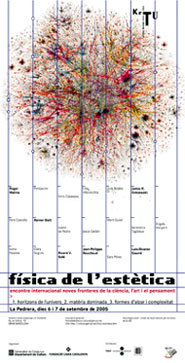
The opportunities for young people toda,- Well, there are opportunities to join that same order, but they are increasingly moving abroad and will continue to do so, or there are opportunities to do some other types of things and to be entrepreneurial, and modern technology is a real way to go. It is a really good opportunity these days. You can see in the US, many examples of young people who have decided to set up some biotech business or Internet-related businesses, look at the founder of Google.
In Europe there is a greater resistance to change,- You are not used to the risk, but nevertheless, if you continue the way you are continuing, you will perhaps end up with nothing, so sometimes doing nothing is a bigger risk than doing something.
There is a certain point in the evolution of society when risk-taking is less risky than not risk-taking. I think when we look at the world and the energy and the economic development in China, some Europeans and I think a higher proportion than before, will have to be the risk-takers, to maintain the socio-economic stability and sustainability for Europe.



Sorry, the comment form is closed at this time.